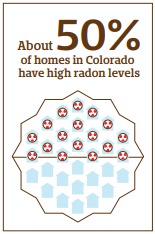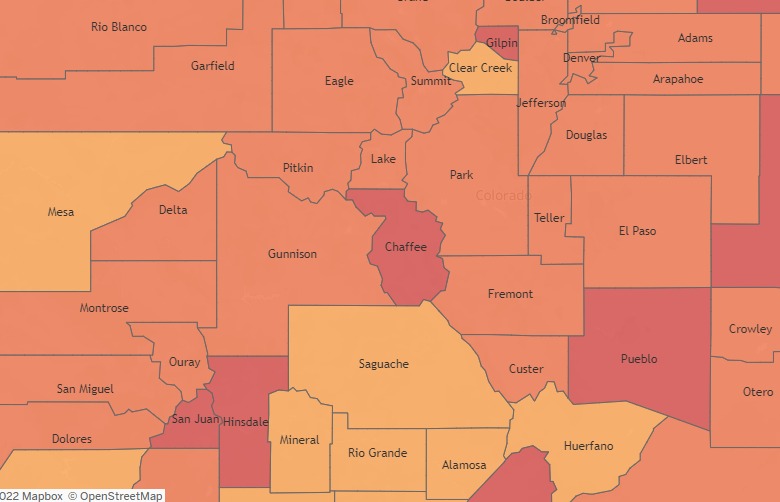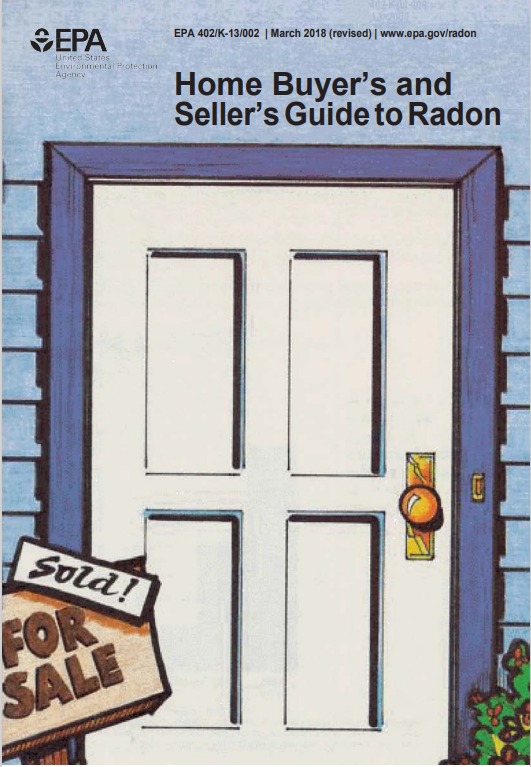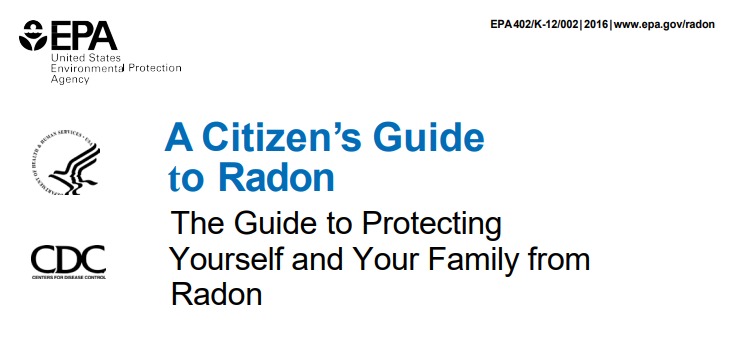The Importance of Testing for Radon in your Home
Radon Information
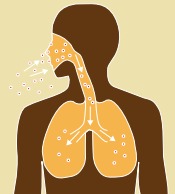
Radon is a Cancer-Causing, Radioactive Gas
You can’t see radon. And you can’t smell it or taste it. But it may be a problem in
your home.
Radon is estimated to cause many thousands of deaths each year. That’s
because when you breathe air containing radon, you can get lung cancer. In fact,
the Surgeon General has warned that radon is the second leading cause of lung
cancer in the United States today. Only smoking causes more lung cancer deaths.
If you smoke and your home has high radon levels, your risk of lung cancer
is especially high
Radon Levels are High in Colorado
Data collected by the Colorado Department of Public Health and Environment indicates that approximately 50% of homes in Colorado have radon levels higher than the U.S. Environmental Protection Agency (EPA)-recommended action level of 4 picocuries per liter of air (pCi/L). All of Colorado – not just the mountains or foothills – is considered to be at high risk for elevated indoor radon levels. of homes in Colorado have high radon levels.
About 50% Radon levels can be elevated in a variety of structures, including: New and old homes. Homes built on all types of foundations, including slab-on-grade, crawlspaces, and basements.
